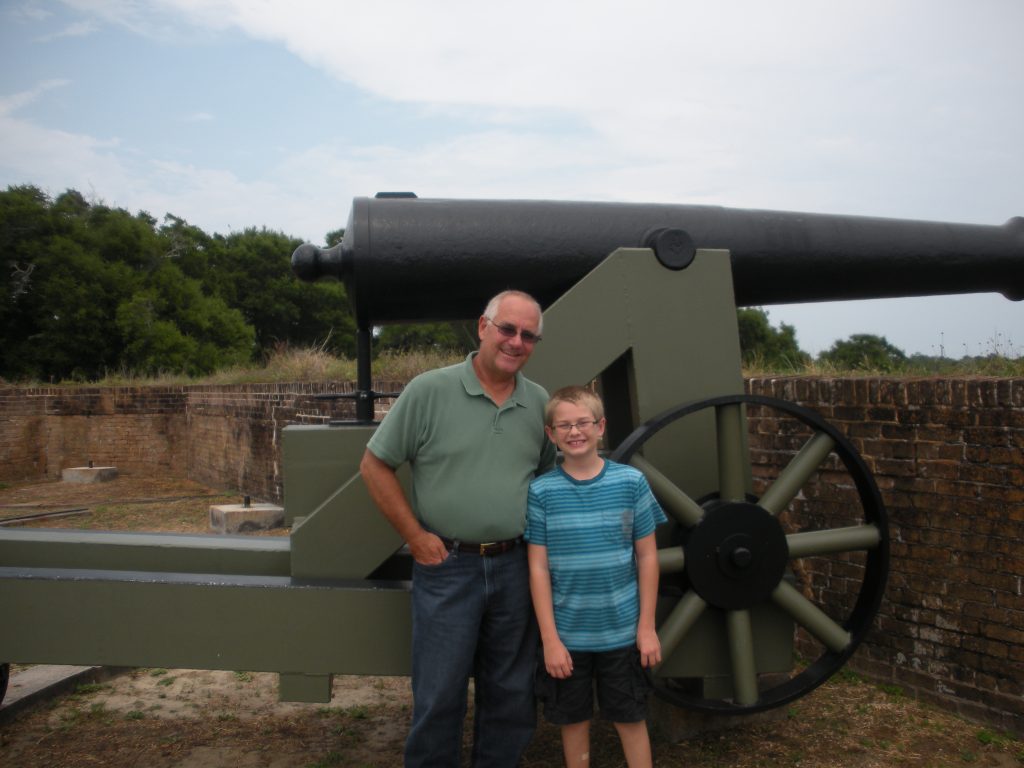Ashbrook Program Inspires Second Career Teacher
December 24, 2020

Secondary school social studies teachers pursuing Master’s degrees through Ashbrook’s program pay for credit hours and books because they love the story of America and want to share it with the next generation. They spend evenings after school in online seminars and summer vacations in intense coursework at Ashland because of a sense of calling. Many teachers in our program discovered this calling after years pursuing a more highly paid profession.
Gary Horne teaches 8th grade American history at Ferry Pass Middle School in Pensacola, Florida. He began working life in the Marines; later, he owned his own construction business. But he lost interest in the business world and realized, from volunteer coaching of his sons’ sports teams, that he enjoyed mentoring young people. So he returned to school, finishing a BA in education and doing his student teaching at Ferry Pass, where he was hired in the fall of 2002. He was a relatively new teacher when he applied to represent the state of Florida in the 2006 “Presidential Academy,” a two-week Ashbrook program that took 52 teachers to Philadelphia, Gettysburg and Washington, DC to study the American idea of equality in the Founding, the Civil War, and the Civil Rights movement.

Horne remembers asking Professor Peter Schramm, as the two stood in Independence Hall, “How did a guy like me get chosen for this incredible experience?” Schramm replied, “Why not you? Sure, we had many strong applicants from Florida, classroom veterans who’ve won teaching awards. But we felt that this experience would benefit you more than anyone else.” Indeed, Horne said, the program has enriched his teaching ever since; each school year he consults the binder of primary documents and the notes he took at the Academy.
Still, he needed more knowledge of history, so he began a Masters at his hometown school, the University of West Florida. The schedule was impractical for a working teacher. After struggling for a couple of years, he let his dream of a Masters go. Then he applied for an Ashbrook weekend colloquium this past fall, traveling again to Philadelphia. He came home wanting to give Ashbrook’s Master of Arts program a try—even though he was skeptical of online courses and, as a man devoted to family, reluctant to travel to Ashland for the summer residence program. But his teacher wife said, “You should do it. Ever since you’ve come back from that colloquium, I’ve seen a new gleam in your eye.”
He began with Professor Dan Monroe’s online seminar on Sectionalism and Civil War. The course was truly interactive, and more engaging than any he had taken at West Florida. Professor and students see each other on the computer screen, and students push a button to signal they want to pose questions. Dr. Monroe “can explain historical concepts in a way that makes them easy to grasp,” and Horne would have happily listened to a lecture. “But Monroe invited comments and responded to all questions as if they were interesting insights. It felt more like a conversation among colleagues than a class. When each three-hour session ended, no one was ready to sign out.”
The course introduced Horne to two key documents in the conflict that led to Civil War: South Carolina’s “Ordinance of Nullification,” a declaration by the state that a protective tariff enacted by Congress and resented by cotton farmers did not apply in South Carolina, and President Andrew Jackson’s proclamation condemning the declaration. Horne decided to present his eighth graders with these documents, after “cordoning off key sections I expected them to focus on.” He prepared a worksheet for each document: not the usual perfunctory exercise with spaces for students to write in minimal responses, but a set of questions to guide discussion as he and the students talked together, working out the arguments made by each writer.
Then Horne asked his students to write President Jackson a letter in which they took positions on nullification. “I wasn’t sure, in this age of texting, that they actually knew how to write a letter. So I showed them letter format, and said they had to address the President in respectful language—they could not call him names.” They had to write a thesis statement, support this position with two ideas drawn from the documents, and make the letter long enough to clearly state their point.
Horne wrote Dr. Monroe about this lesson. “You should have seen the letters,” he enthused; they showed that “my students really liked the project and embraced the writing.” Then Horne mused about the intangible aspect of a teacher’s work. In his former profession, when he completed tiling projects, the evidence of good work “was clear for all to see. Not so much with teaching! How do you know when you’re doing a good job?” Having seen proof of success, Horne’s instinct was to pass the favor to Monroe. “I got the seed idea to do this project from your class,” he wrote, and “thought you’d like to see how your work affects a teacher like me.”

